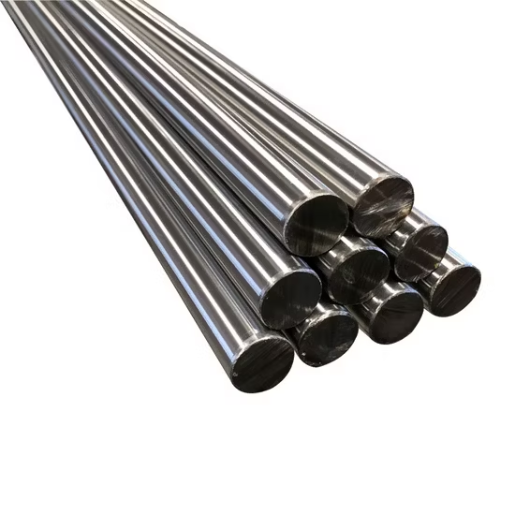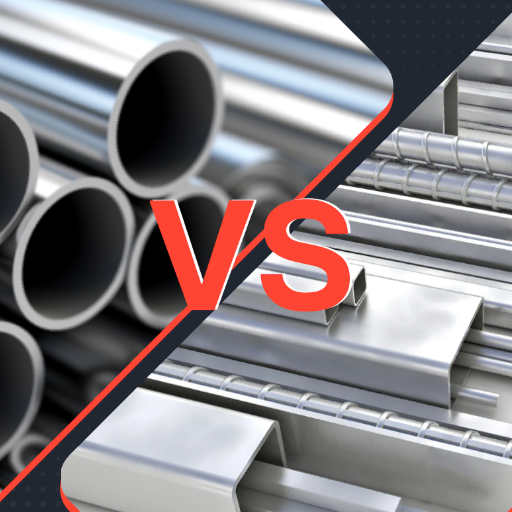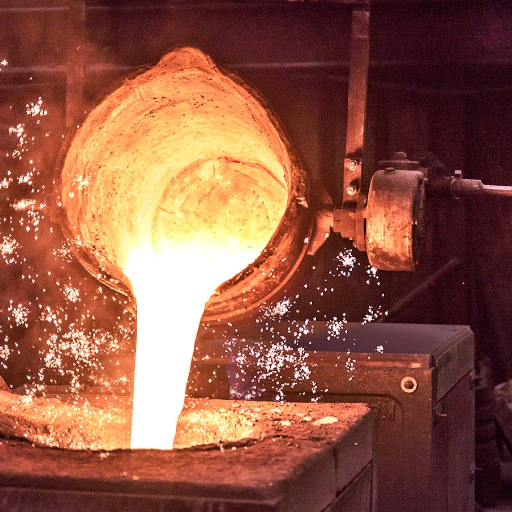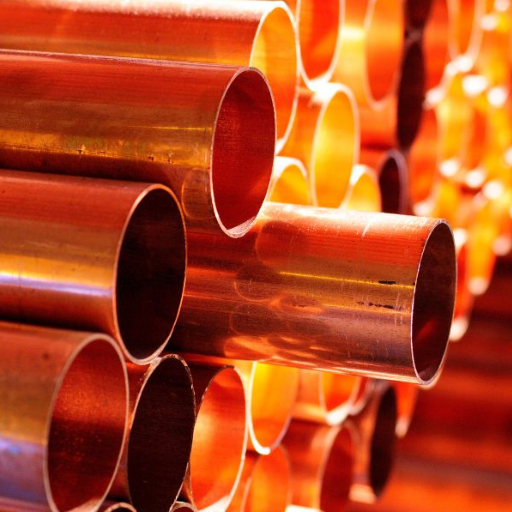Copper’s ability to take on a green tint is an art of creation. Appealing to the eye isn’t the only most important factor. A combination of oxygen, moisture, and certain other contaminants in the environment tend to cause the copper to undergo a chemical reaction that changes its initial state. Sounds pretty inspiring already, doesn’t it? There are two sides to the discussion here, one is the science of the factors that cause patina to form, and the other is how quickly patina forms. The goal of this article is to help readers understand why copper takes on a green tint under unique environmental conditions, and what patina means in art and architecture?
What Causes Copper to Turn Green?

The greening of copper is due to a chemical process called oxidation. When copper interacts with the oxygen in the air, it creates a dull covering called copper oxide and when left alone, this covering undergoes further change because of the presence of moisture and other impurities like carbon dioxide, sulfur dioxide, or chloride ions. In time, this covering can further change to copper carbonate or copper sulfate compounds. The greenish coloration can be attributed to the other compounds with which copper interacts. This process heavily relies on external conditions like the level of humidity, temperature and air pollution as these can either expedite or slow down the formation of patina.
Why Does Copper Oxidize?
The oxidization of copper takes place mainly due to the natural interaction of copper with the environmental oxygen and other materials Copper gets oxide as a result of oxidization which occurs when copper gets in contact with atmosphere oxygen; it will get transformed into copper oxide. Eventually, this copper oxide will react with carbon dioxide, water, and sulfur dioxide or chloride ions from the air and turn into, copper carbonate or copper sulfate. These reactions patina yellowish green and dark brown layers. This transformation occurs due to the processes of oxidation making it easier in which copper achieves a lower energy state with elements. Other factors include the moisture surrouning the copper, increase in temperature, and poos ion levels have a drastic impact on the changing state of the reaction and the speed at which it occurs.
The Role of Oxygen and Moisture
The oxidation of copper is enabled fundamentally by oxygen and moisture. When exposed to the atmosphere, copper reacts with molecular oxygen in the presence of water vapor yielding a thin film of Copper(I) Oxide (Cu2O). This preliminary reaction is enhanced by moisture which acts as a solvent for ionic migration leading to further oxidation into Copper(II) oxide. With time, moisture along with carbon dioxide and various environmental pollutants facilitates the formation of copper sulfate or carbonate compounds which eventually yield the characteristic green patina. The dynamics of this chemical reaction showcase copper’s varying humidity, atmospheric quality, and temperature dependencies in regard to different rates and forms of oxidation.
Understanding the Green Patina Formation
Investigations carried out by eminent scientific organisation, as well as documentation from material science databases suggest that the major factor that drives the creation of greenish patina revolves around chemical or environmental changes. The formation of cuprous oxide (Cu2O) marks the start of the greenish patina development on copper surfaces. It yields further reactions with oxygen, forming cupric oxide (CuO). The gas carbon dioxide, along with chloride and sulfides, may lead to reaction with copper. With sufficient exposure, these reactions make it possible to produce compounds such as copper carbonate (Cu2(OH)2CO3) or copper sulfate (Cu4(OH)6SO4).
Local humidity, the presence of pollutants such as sulfur dioxide in industrial areas, and temperature dictate the patina’s development. Urban areas, for example, have sulfate rich copper due to industrial emissions which speeds up the formation of copper sulfate. On the other hand, rural areas are less polluted and are favorable for carbonate formation. Each individual layer of patina acts as a protective barrier from further oxidation which increases the lifespan and strength of the copper.
How Long Does It Take for Copper to Develop a Patina?

The formation of a patina on copper depends greatly on the environmental conditions present, and therefore the time taken for copper to develop a patina will always vary. When placed outdoors, copper will take anywhere from five to twenty years to develop fully. In a polluted area, the time frame shrinks to a few years because of increased sulfur dioxide and moisture levels. On the other hand, arid environments will have the copper take even longer, sometimes even decades.
Factors Affecting the Timeframe
With that said, we can determine the period it takes to patina copper with the following key conditions:
1. The atmospheric ratio contributes to the copper’s patina period. If the area is damp or wet, the chemical reaction with copper, oxygen, and atmosphere components will increase thus increasing the patina development period.
2. People living within urban or highly populated regions will undergo accelerated patina formation because sulfur dioxide and other air pollutants are present. This in turn will increase copper sulfate formation.
3. Areas located near the sea will have rapid patina development because of the salt and moist air. Contrarily, arid areas will slow down the patina, thickening the time frame.
4. Copper exposed to the weather will develop patina at a much faster rate compared to covered or sheltered copper.
5. Textured or weathered copper surfaces are bound to develop patina faster than smooth or polished copper surfaces.
All of these factors together determine how long it takes to achieve the needed green patina finish on copper.
Comparing Indoor and Outdoor Copper
Differences in environmental factors of exposure result in distinct behaviors of indoor and outdoor copper. For instance, outdoor copper is affected by atmospheric moisture, pollutants, and changes in temperature, all of which increase the rate of patina development. This often results in the characteristic green finish developing in a few years, depending on local humidity and air quality. On the other hand, indoor copper is more insulated from these factors, which results in a less accelerated change. Copper that is not exposed to moisture and pollutants tends to maintain its sheen; therefore, to achieve an aged look, it requires manipulation in a controlled environment. When selecting copper for an application, it is imperative to consider the copper’s anthropogenic environment in order to make the right aesthetic and functional decisions.
Accelerating the Process with Chemicals
The formation of the patina on copper surfaces can be accelerated through the use of chemical agents which imitate natural weathering. Ammonium sulfate, Potassium sulfide, and even vinegar are commonly used chemicals. These compounds aid in the controlled generation of patina by spatially manipulating the water, oxygen, and reagents. Take for example a mixture of salt and vinegar, it can form green copper carbonate, also called verdigris in a matter of hours or days depending on the technique applied. When Liver of sulfur is added to water, it undergoes sulfide reactions that give the surface an aged darker look. In order to achieve uniform results, the reaction copper gratings need to be cleaned thoroughly. The chemical needs to be applied uniformly to cleanse the surface, and sufficient time needs to be given while the surface is gestated in proper conditions. These chemical methods enable a user to achieve precise aesthetic results on copper far quicker than waiting for the copper to age naturally. One thing to note is that gloves and goggles are required due to the dangerous nature these compounds possess.
Does Copper Turning Green Affect Its Durability?

Patination or patina, which refers to the green layer of oxidation that forms on copper, does not typically affect its structural integrity. The shade of green identified as copper patina forms due to oxidization and acts as a shield against further degradation. Moreover, it is so sound that it does not undergo degradation and decompose over time and can maintain its or structural integrity. Therefore it can be stated that the change in aesthetic does not compromise the applications in which metal is used exponentially increase.
Protective Nature of the Patina
This patina weathered by environmental influences acts as a natural protective layer for the metal. more specifically, the protective layer comprises a copper carbonate base. This type of copper patina is more resistant to air pollutants, moisture, and even acid rain. Additionally, this shield relaxes the oxidation and corrosion processes for the underlying copper. Research suggests the formation of patina adds considerable durability to copper when used in roofing, carving architectural elements, or even in sculptures. Therefore, bronze copper patina should not be mistaken as damage, but green patina should be seen as the metal’s ability to self-preserve and adapt to the environment.
Corrosion vs. Patina: Understanding the Difference
Even when both involve a metallurgic reaction, patina and corrosion are both different processes. Corrosion is concerned with the destructive processes of metals resulting from the action of oxygen, water, and other acidic compounds, which weaken or deteriorate structural features. It produces flaky, rough surfaces and significantly decreases structural integrity over time. Further, patina is best described as a more stable form of oxidation on copper, which is more controllable in nature. This layer is generally green or brown due to copper compounds and is very thin yet firmly adherent. It is a form of protection as a sheath for the metal underneath so that further deterioration does not take place. Patina, as opposed to corrosion is, is likely to increase endurance and beauty which increases its uses in art and structures.
Can You Control the Color of Your Copper?

Yes, through certain chemical and environmental actions the color of copper can be controlled. By changing such factors like the kind of chemical solution, length of exposure, and environmental conditions such as humidity and temperature, different patina colors can be achieved. For example, ammonium chloride containing solutions will yield a blue-green patina while acetic acid with salt will yield a greener tint. These techniques are often employed in art and architecture to achieve desired aesthetic while still preserving the protective attributes of the patina layer.
Methods to Influence the Patina Color
To influence the color of the patina on copper, one must consider controlling the chemical processes, environment, and even the surface preparation. Following are the general steps that may be implemented to achieve the desired patina finish:
- Chemical Application
To obtain ammonium sulfate, ammonium chloride, or salt-vinegar solutions can be used to stimulate controlled patina development. For example, ammonium chloride solutions yield blue and bluish green colors while acetic acid and salt combinations produce richer shades of green.
- Environmental Conditions
Patina formation is highly affected by the air’s temperature and moisture content along with the duration of exposure. Increased levels of humidity result in faster oxidation and temperate shifts affect the color and texture of the patina.
- Surface Preparation
Patina forms more effectively when the copper surface is well cleaned and sanded. Thoroughly scrubbing and getting rid of oils, grease, and unwanted particles gives a boost to the many highly reactive chemical processes involved in patina formation.
These techniques have both artistic and practical scope in design, sculpture, architecture, and production industries to serve aesthetic needs along with functional use.
Preserving the Original Copper Color
To maintain the original copper color, proper cleaning and environmental control is required. First, the surface must be cleaned using non-abrasive materials like washing with mild soap and warm water so sautéing does not scratch or prematurely oxidize the surface. Furthermore, applying a clear lacquer or some specialized wax coating halts exposure to air and moisture which are the two leading catalysts for patina formation. A stable dry environment with low humidity helps copper further combat oxidation overtime. Routine maintenance, bronzing, and protective coating reapplying allows copper’s natural shine and brightness to last a long time.
Using Sealants to Protect Copper
Sealants are proven to be effective in preventing copper from oxidizing and being damaged by the environment. Commonly used to seal metals are clear, solvent-based sealants or waterborne acrylic polymers. These sealants offer a transparent and tough shield that protects copper from moisture, air, and other harmful chemicals. The wrought copper needs to be cleaned properly to eliminate all contaminating materials then the sealant should be applied uniformly by a brush, sprayer, or cloth according to the instructions provided by the manufacturer. Allowing optimal curing time achieves superior adhesion and protective seal. In some cases, more frequent applications of the sealant will be required to guarantee effectiveness over time, especially in moisture-rich environments or outdoors.
Famous Examples of Copper Patina

Copper patina attracts attention because of its beauty and protective features in a number of spectacular buildings around the world. A striking example is the Statue of Liberty located in New York City, where the green patina due to weathering over the years serves not only an aesthetic purpose, but also protective by shielding the underlying copper from continued corrosion. The rooftops of historic structures in Europe like St. Stephen’s Cathedral in Vienna also demonstrate stunning patina hues which have become a trademark of their architectural design. These examples illustrate how copper patina is both a proof of robust construction material alongside a beautiful blend of functionality and elegance.
The Statue of Liberty’s Transformation
It took the Statue of Liberty approximately 20 years to change from a reddish-brown color to the familiar greenish hue we recognize today. It was first completed in 1886. Upon unveiling, the statue displayed a reddish-brown appearance which was common with new copper. Over time, exposure to the elements initiated a natural weathering process. The statue’s surface was reacting with oxygen, sulfur, and moisture present in the air which resulted in the formation of copper oxide. Over time, this copper oxide would convert to copper sulfates and carbonates. This change eventually led to the statue achieving the durable green patina we see today. This statue acts as a shield and dominates the surrounding area. The change in the Statue of Liberty reveals the remarkable changes that take place in nature through the unique chemical processes involved in patina development and its serious relevance in material preservation.
Copper Roofs and Architectural Features
Its long lasting, versatile, and unique properties having it age over time while developing a protective layer, has made copper a popular choice in architectural work. Copper roofs, are in particular are valued for aesthetic reasons, and also for the incredible amount of weathering and corrosion they can withstand. The patina that is formed by the interaction with moisture and air over the years, does not only protect copper from degradation, but also improves it’s longevity. Because of these factors, some copper structures can last for over a century.
Windows, doors, gutters, and facades can also be made from copper which increases the architectural elegance of a building. The most astonishing feature is that copper can easily be molded into different shapes. Coupled with its exceptional thermal and electric conductivity, copper lowers the temperature of a building. This makes it possible for buildings to be energy efficient. Copper undergoes drastic changes over time which gives a structure a unique identity. It ensures aesthetic appeal while providing stability. Because of these traits, copper is a perfect aluminum to both modern and historical constructions.
References
Frequently Asked Questions (FAQ)
Q: What is the time required for copper to change its color to green?
A: The time needed for copper to turn green relies heavily on environmental conditions. It can take several months and, inversely, some years in terms of humidity, exposure to sulfur compounds, and the surface of copper.
Q: What creates the green color on copper objects?
A: The green color on copper objects emerges from the process of oxidation, which manifests naturally. It occurs after the exposure of copper to different elements over a particular time frame and the formation of Greenish White (verdigris).
Q: Does the green patina damage the underlying copper?
A: The rest mask provided by patina is not dangerous while the copper is beneath. It aids the metal from further corrosion. Yet, in case you wish to keep a non-patina covered shiny copper, then a protective coating should be applied.
Q: Can I expedite the oxidation process to create a patina?
A: Chemical application or some personal techniques can enhance the rate of oxidation. However, these methods tend to result in an inconsistent finish, so care should be taken not to use any harsh techniques that would erode the copper’s surface.
Q: What causes the blue patina seen on statues like the Statue of Liberty?
A: The blue layer of patina that covers the Statue of Liberty and other statues of copper is due to weathering. Copper, over a period of time, interacts with the moisture and pollution in the air, forming a beautiful blue layer of patina that is protective in nature.
Q: Is it true that copper changes color with weather and climate?
A: Yes, climate is an important factor in the speed at which copper changes color. Areas with high sulfur levels and moisture are favorable for faster oxidation which leads to patina faster than normal.
Q: Can I remove the patina if I don’t like how it looks?
A: Yes, those who prefer the bright shine over the green patina can remove it from copper objects but it requires the use of either chemicals or rough treatment that could harm the surface of copper which makes this process delicate.
Q: What occurs if copper is left outside for a prolonged period of time?
A: Leaving copper uncovered can result in it developing patina and oxidizing at an accelerating pace, substantially changing its appearance over time; giving it an uneven, rustic look. To bordering halt this process, one can utilize a protective coat or sealant to maintain its shine, albeit altering its natural look.







